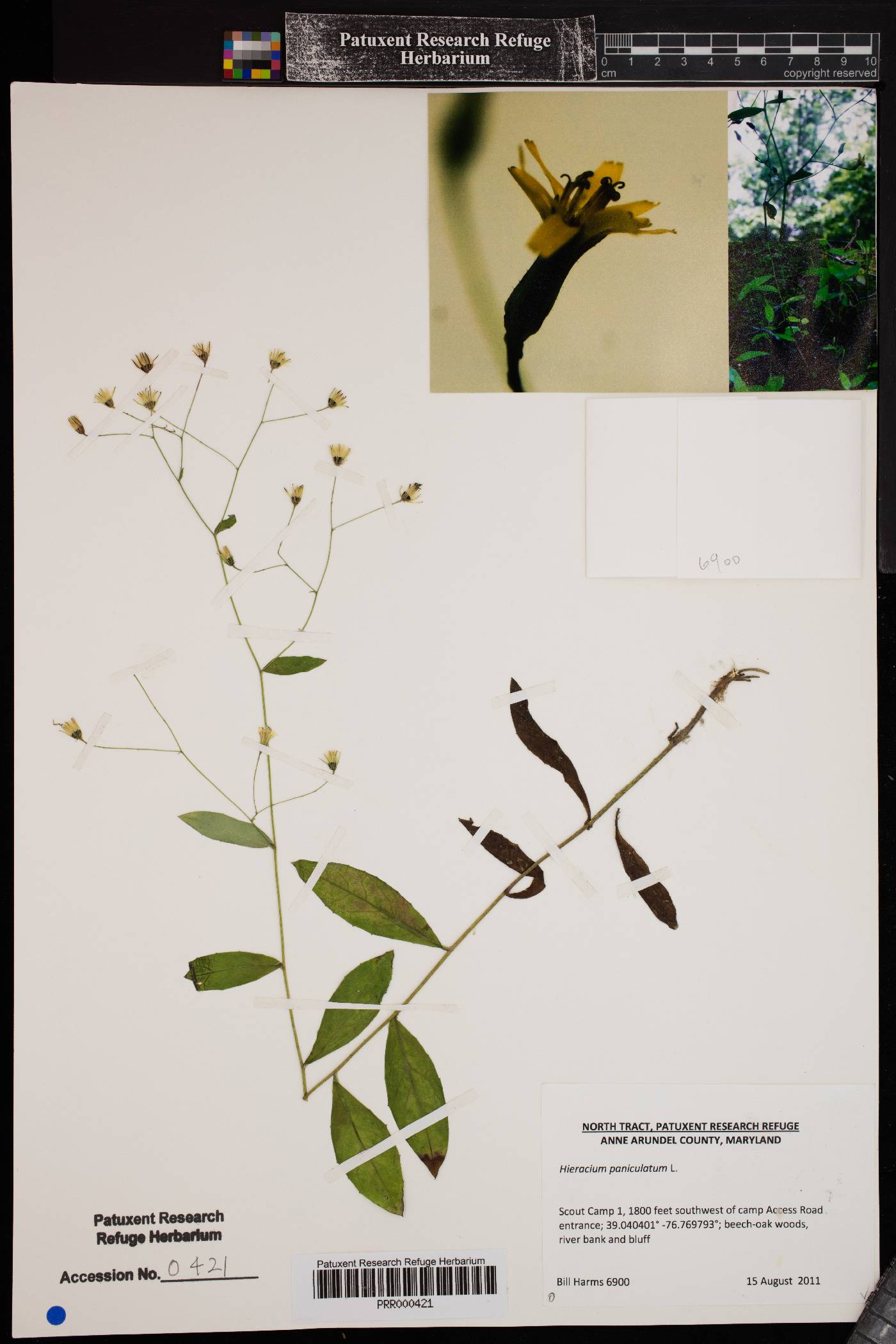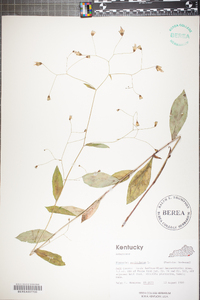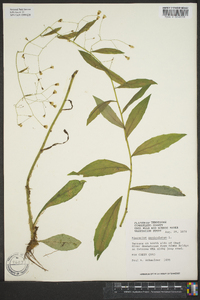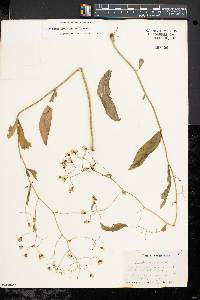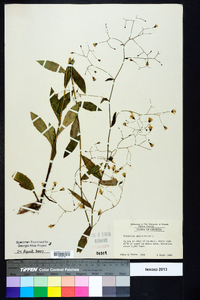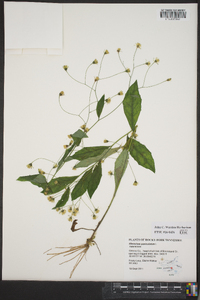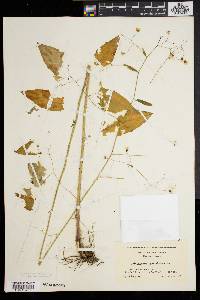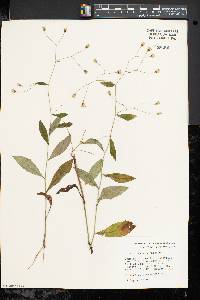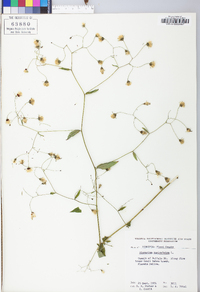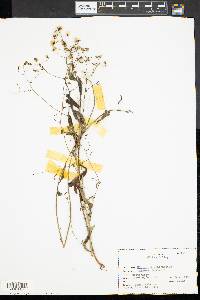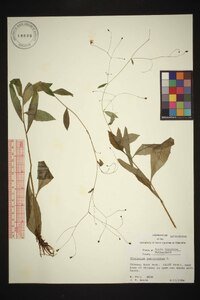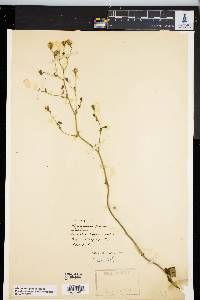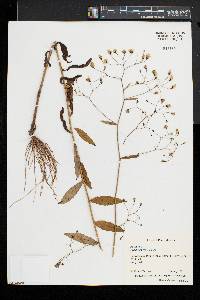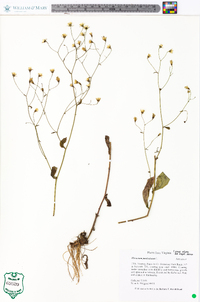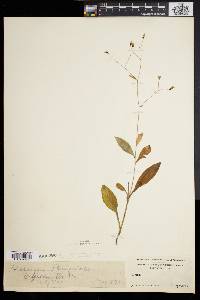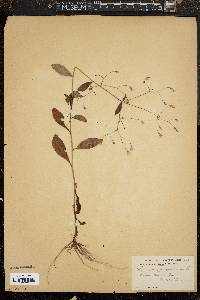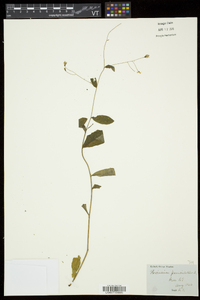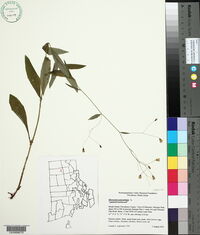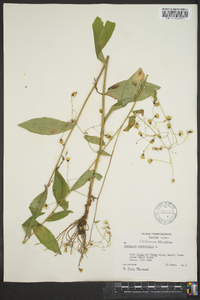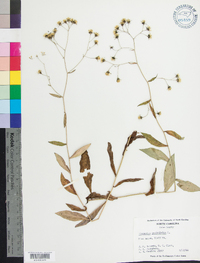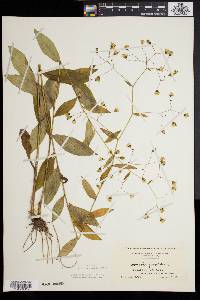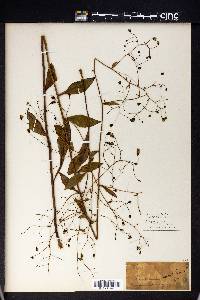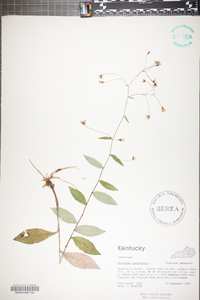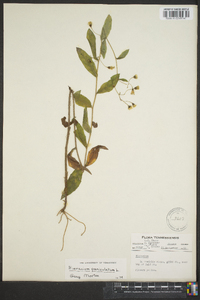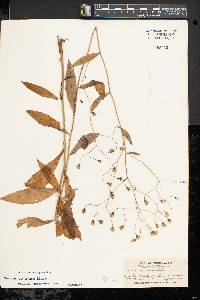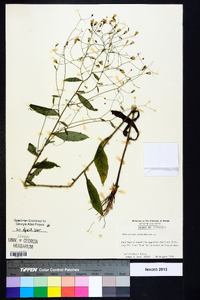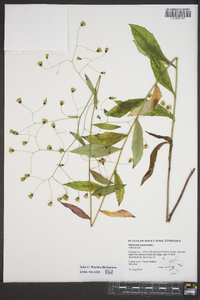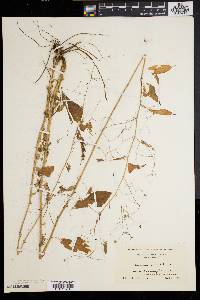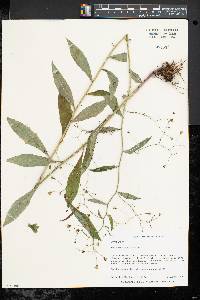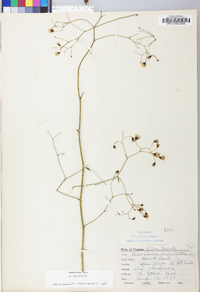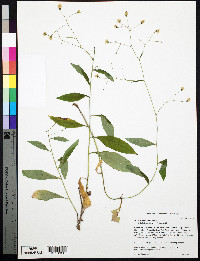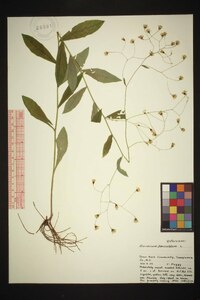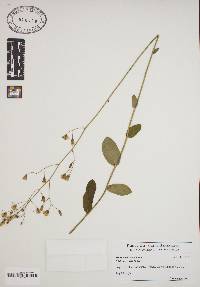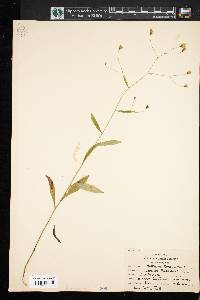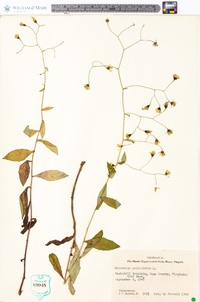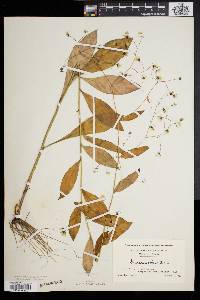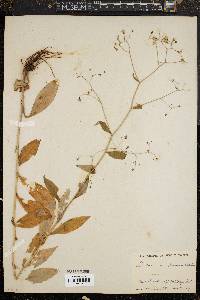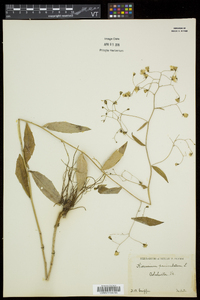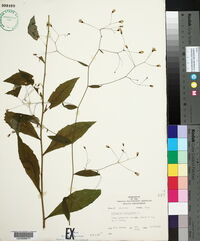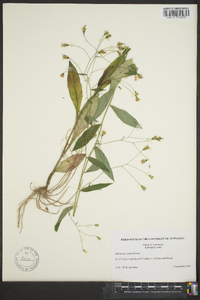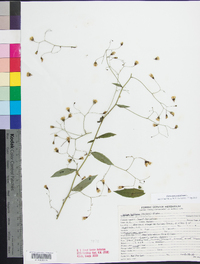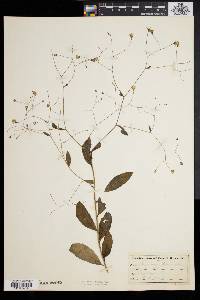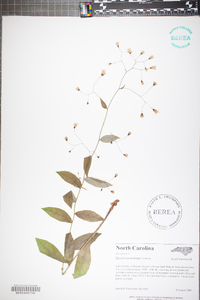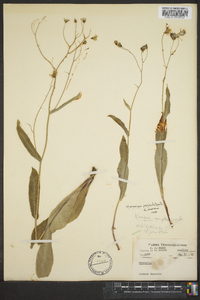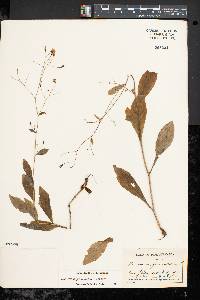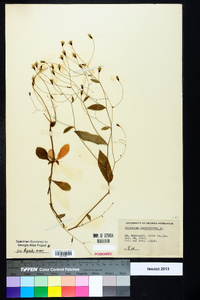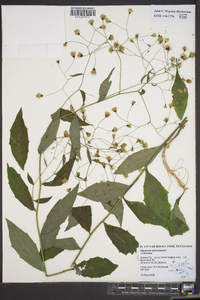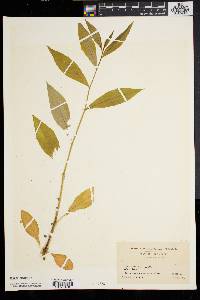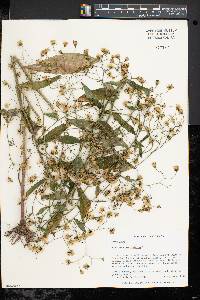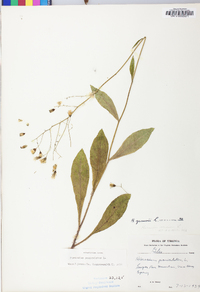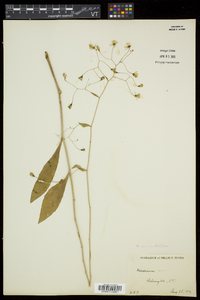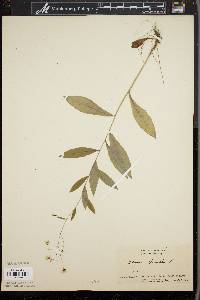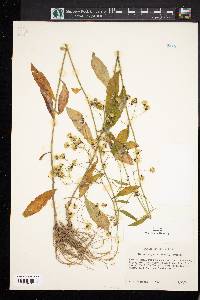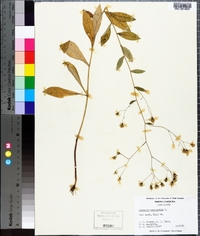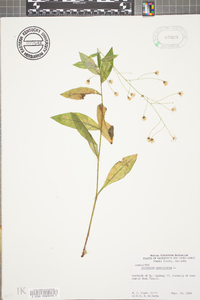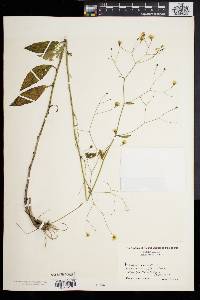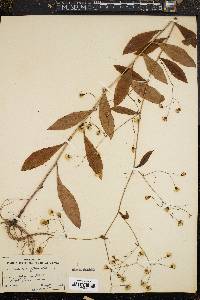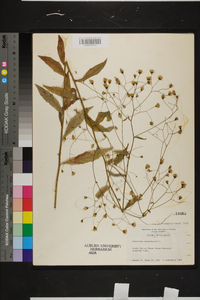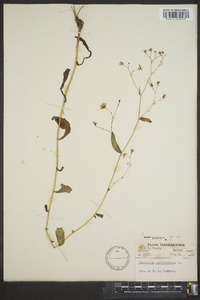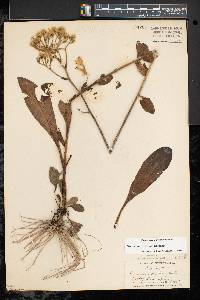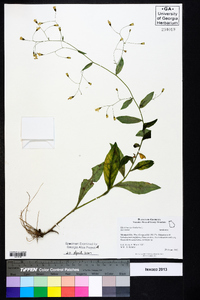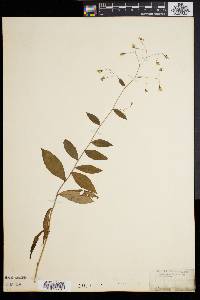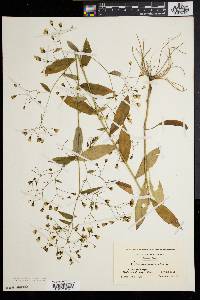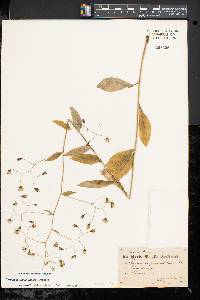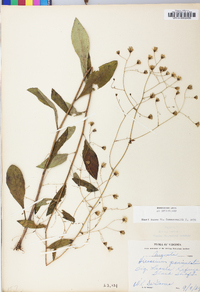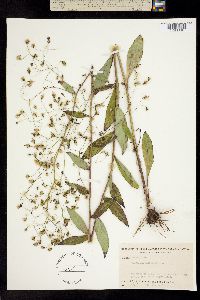Hieracium paniculatum
|
|
|
|
Family: Asteraceae
Allegheny Hawkweed
|
Plants 30-90 cm. Stems proximally usually glabrous, sometimes piloso-hirsute (hairs 3-8+ mm) and/or stellate-pubescent, distally usually glabrous. Leaves: basal 0(-2), cauline 6-12+; blades elliptic or oblanceolate to lanceolate, 30-80(-150) × 6-25(-35) mm, lengths 3-6+ times widths, bases cuneate, margins usually toothed, sometimes denticulate or entire, apices acute to acuminate, faces glabrous or piloso-hirsute (hairs 1-4+ mm). Heads (6-)12-50+ in corymbiform to paniculiform arrays. Peduncles usually glabrous, sometimes stipitate-glandular. Calyculi: bractlets 8-13+. Involucres campanulate to cylindric, 6-7 mm. Phyllaries 8-13+, apices acute to acuminate, abaxial faces usually glabrous, sometimes stipitate-glandular. Florets 8-20(-30); corollas ochroleucous to yellow, 5-8 mm. Cypselae columnar, 2-2.5 mm; pappi of 35-40+, stramineous bristles in ± 2 series, 4-5 mm. Flowering (Jul-)Aug(-Oct). Openings in forests; (10-)500-800 m; N.B., N.S., Ont., Que.; Ala., Conn., Del., Ga., Ind., Ky., Maine, Md., Mass., Mich., N.H., N.J., N.Y., N.C., Ohio, Pa., R.I., S.C., Tenn., Vt., Va., W.Va. The type of Hieracium scribneri Small may have resulted from a cross between plants of H. paniculatum and H. venosum (A. Cronquist 1980).
Stems solitary (2) from a short caudex or crown, 3-15 dm, long-hairy below, otherwise glabrous or nearly so, leafy up to the infl; lvs thin, glabrous or with a few long hairs on the persistently glaucous lower surface, irregularly callous-toothed or subentire, the lowest ones petiolate, only slightly if at all enlarged, mostly soon deciduous, the others elliptic, often narrowly so, narrowed to a sessile or subsessile base, only gradually reduced upward, 4-12 נ1-2 cm; infl open-paniculiform, with long, flexuous, very slender peduncles, these, like the invol, glabrous or occasionally with some gland-tipped hairs; invol narrow, 5-9 mm; fls 8-30; achenes truncate, 1.8-2.5 mm; 2n=18. Woods; N.S. and Que. to Minn., s. to Va., O., and in the mts. to n. Ga. July-Sept. H. ءllegheniense Britton is a hybrid with no. 16 [Hieracium gronovii L.]. Gleason, Henry A. & Cronquist, Arthur J. 1991. Manual of vascular plants of northeastern United States and adjacent Canada. lxxv + 910 pp. ©The New York Botanical Garden. All rights reserved. Used by permission. From Flora of Indiana (1940) by Charles C. Deam Infrequent to very local in the counties shown on the map. It has been reported from Jefferson, Johnson, Lake, and Monroe Counties. N. C. Fassett says that the Umbach specimen from Lake County is H. canadense. It prefers slightly acid and sandy soil. Usually found on black and white oak slopes, although I found several specimens in a moist, level, sandy woods along Pigeon River in Lagrange County. A glandular variety of this species has been described, but all of our specimens are glandless. ...... Indiana Coefficient of Conservatism: C = 8 Wetland Indicator Status: N/A |

